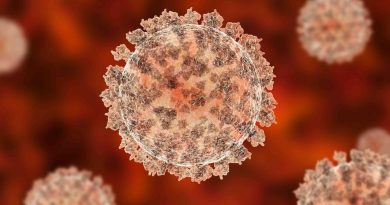Third of Nondialysis Kidney Disease Patients Have Severe Symptoms
Researchers have identified two distinct symptom trajectories in nondialysis dependent patients with moderate to severe, stage 3 to 5, chronic kidney disease (CKD).
Close to a third of the patients (31%) had very severe symptoms — notably fatigue and muscle pain — at baseline that worsened over time, and the remaining 69% of patients had less severe symptoms at baseline that remained stable, during a median 5.3-year follow-up.
Clinicians should perform “a systematic assessment of symptoms [in patients with CKD] by a validated questionnaire for planning early therapeutic interventions,” the researchers advise, adding that “large gains may be achievable with greater provider appreciation of the importance of symptoms.”
They call for “future research to assess the modifiable factors that affect the unfavorable symptom trajectory and other aspects of quality of life.”
The study by Moustapha Faye, MD, and colleagues was published online October 28 in the Clinical Journal of the American Society of Nephrology.
In an accompanying editorial, Giselle Rodriguez de Sosa, MD, and Mark Unruh, MD, from the University of New Mexico, Albuquerque, write: “In addition to disease management,” this “important study” provides “further evidence of the need to care for the unpleasant symptoms that cause suffering and affect the well-being of patients with advanced CKD.”
Many current treatment regimens and medications may have unintended adverse consequences that contribute to reduced quality of life, they note.
“It is now more relevant to assess different patients at different stages” of CKD and target high-risk trajectories early on, with interventions to alleviate distress and poor quality of life, and not just avoid progression to a terminal stage,” according to the editorialists.
Little Known About Evolving Symptoms in CKD
There is little information about evolving symptoms in patients with different stages of CKD, and the few studies of patients who were not on dialysis have inconsistent findings, write Faye, of Centre Hospitalier Régional Universitaire [CHRU], Nancy, France, and Cheikh Anta Diop University of Dakar, Senegal, and colleagues.
They hypothesized that individuals with eGFR < 60 mL/min/1.73 m2 could be classified into subgroups based on their symptoms.
The patients were part of the CKD–Renal Epidemiology and Information Network (CKD-REIN), a nationally representative cohort of patients in France.
Researchers identified 2787 patients in the CKD-REIN cohort who had been diagnosed with CKD, had an eGFR <60 mL/min/1.73 m2, were not on kidney replacement therapy (dialysis or awaiting transplant), and had been seen by a nephrologist from July 2013 to March 2016 and followed until December 2020.
Patients were given a Kidney Disease Quality of Life-36 questionnaire (KDQOL-36) to complete at baseline and at 1, 2, 3, and 5 years.
Participants were a mean age of 67 years and 66% were men. They had a mean eGFR of 33 mL/min/1.73 m2 and 45% had stage 4 or 5 CKD.
The KDQOL-36 questionnaire asked patients to report how much they were bothered (not at all, a little, moderately, a lot, or very much) by 11 symptoms: chest pain, cramps, dry skin, faintness/dizziness, fatigue, itchy skin, lack of appetite, muscle pain/soreness, numbness in hands/feet, nausea/upset stomach, and shortness of breath.
During the study follow-up, 31%, 19%, 15%, and 15% of study participants completed five, four, three, and two KDQOL-36 questionnaires, respectively
Almost all patients (98%) reported at least one symptom. The most common symptoms were fatigue (83% of patients), muscle pain/soreness (82%), cramps (72%), dry skin (60%), and shortness of breath (68%). The least common symptom was chest pain (24%).
The researchers used a statistical model to identify two distinct symptom score trajectories, taking into account study dropouts due to kidney replacement therapy or death.
During follow-up, 690 patients started kidney replacement therapy and 490 patients died.
Patients in the “worsening symptoms” group deteriorated by more than 10 points (on a scale of 1 to 100).
The 31% of participants in the “worse symptom score and worsening trajectory” group had more baseline risk factors for CKD progression (eg, diabetes and obesity), a worse quality of life, and a higher probability for either kidney replacement therapy or death before kidney replacement therapy compared with the 69% of patients in the “better symptom score and stable trajectory” group.
CKD-REIN is funded by the Agence Nationale de la Recherche and also supported by different public-private partnerships with industry, over the years, as listed with the article. The author and editorialist disclosures are available with the publications.
Clin J Am Soc Nephrol. Published online October 28, 2022. Abstract, Editorial
For more diabetes and endocrinology news, follow us on Twitter and Facebook.
Source: Read Full Article



